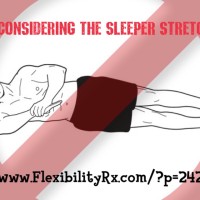
Reconsidering the Sleeper Stretch
The sleeper stretch is a popular shoulder exercise but there are some factors you should consider before deciding on its appropriateness.
Oftentimes range of motion limitations are misdiagnosed. Certain muscle groups are then blamed and inappropriate stretches are performed. The hamstrings, for example, are a common muscle group that are blamed for a variety of range of motion limitations including the straight leg raise, the forward bend, and the ‘butt wink’ at the bottom of the squat.
But when we look closer and understand what is truly causing these limitations – anterior pelvic tilt limiting the straight leg raise and limited hip flexion causing the butt wink – we begin to appreciate the importance of proper assessment which prevents overstretching of muscles, tendons, and ligaments.
When looking at shoulder internal rotation it is important to first evaluate the position of the ribcage. Before stretching the shoulder ask yourself if a flared ribcage is limiting shoulder rotation. In this scenario use a positional breathing drill to restore the neutrality of the torso. Then re-evaluate the shoulder.
Image from DNS Exercise 1 Course
#1: Assess the Ribcage First
Do not ignore the need for abdominal activation to reposition the ribcage into a neutral position. The diaphragm has both respiratory and postural roles. Diaphragm function will influence the position of the ribcage and the tonus of the deep hip flexors which influence the pelvis and ribcage.
If you want to restore range of motion you need to provide an individual with a different respiratory strategy so that their shoulder blades can rest properly on a neutral ribcage.
#2: Respiration Influences Neurology Which Influences Muscle Tonus
Ribcage flair is supported by a sympathetic nervous system state (fight or flight). This means that blue light, loud noises, aggressive stretching, and over reliance on bilateral movements all have the potential to lock up your shoulder.
If your nervous system cannot alternate between a relaxed and ready state then your structural alignment will be affected. But rather than jumping in and just stretching the shoulder let’s restore respiration, fully exhaling and resetting the ribcage.
#3: Recognize the Influence of Asymmetry
Some individuals will have limited internal rotation on both sides. However, if you look closer what you will find is that the right side will always be more limited (even with left handed people). This is driven by the right hemi diaphragm orienting the spine and pelvis to the right.
The Postural Restoration Institute discusses this in detail but in short, the compensatory right dominant strategy that many individuals utilize produces ribcage flair on the left. This means that the left abdominals, hamstrings, adductors, and glutes need to be trained to restore alternating and reciprocal function. PRI practitioners assess and treat an individual’s ability to achieve left stance phase of gait.
“Ladies Love Cool J” stuck in right stance
The design of our organ system is asymmetrical – the right hemi diaphragm is supported by the liver. The left diaphragm tends to be more flattened (stuck in a state of inhalation) and the left abdominals tend to need more integration into functional movement patterns.
Getting someone to exhale fully on their left side in particular will help restore ribcage position so that they can breathe into their right chest wall.
An individual with a flared left ribcage will struggle getting air into their opposite chest wall (their right). The lower ribs on the left will always be more flared than on the right side. This will limit shoulder internal rotation on the right.*
*When right chest wall (apical) expansion is limited the anterior neck (scalenes) will begin to overwork to pull air in by elevating the 1st rib. This rotation of the upper ribs (driven by abnormal respiration) will malposition the shoulder joint.
One of the biggest game changing concepts I have learned is that to inhibit a hyperactive right neck you need to activate the left abdominals to restore the neutrality of the ribcage.
Thanks to the Postural Restoration Institute for introducing this concept to the rehab and fitness community.
Additional Perspectives
Mike Reinold has written a number of blogs on the pros and cons of the sleeper stretch providing alternatives. He also advices coaches not to assume that their posterior capsule is tight. He does provide a nice soft tissue technique with a trigger point ball for people that actually have posterior capsule tightness.
DNS instructor Robert Lardner also uses a manual technique gently applying pressure with a golf ball to specifically target the capsule – when appropriate.
Eric Cressey who has worked with hundreds of baseball pitches mentioned that many pro athletes are still given questionable shoulder stretches when they should be working on stabilizing end range positions. I like his statement of, “Looking back, we were probably trying to ‘stretch out’ an alignment issue – and that never ends well.”
– Kevin J. Kula, “The Flexibility Coach”
—
Resources
https://mikereinold.com/why-i-dont-use-the-sleeper-stretch/
https://mikereinold.com/alternatives-to-the-sleeper-stretch-that-may-actually-work-better/
https://mikereinold.com/the-correct-way-to-perform-the-sleeper-stretch/
https://ericcressey.com/the-most-important-three-words-in-strength-and-conditioning
https://www.posturalrestoration.com/programs-courses/introductory-courses/postural-respiration
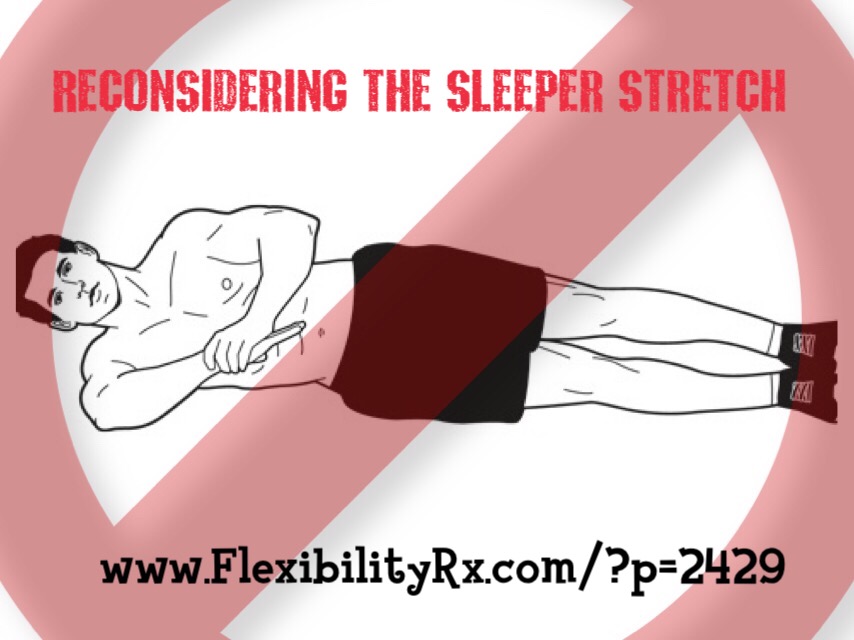
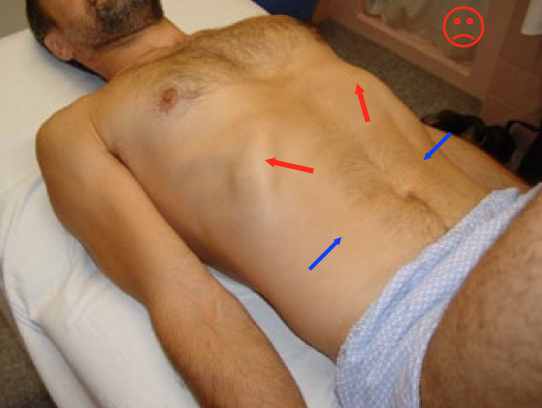

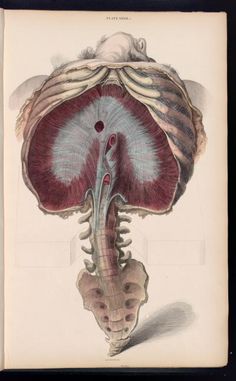
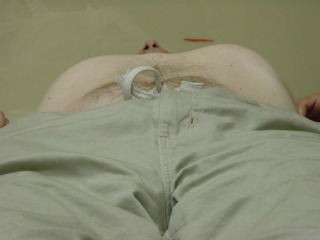
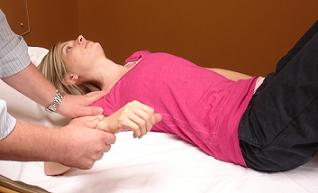
Leave A Reply (No comments so far)
You must be logged in to post a comment.
No comments yet